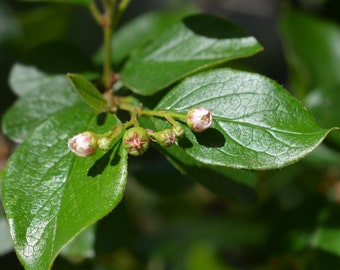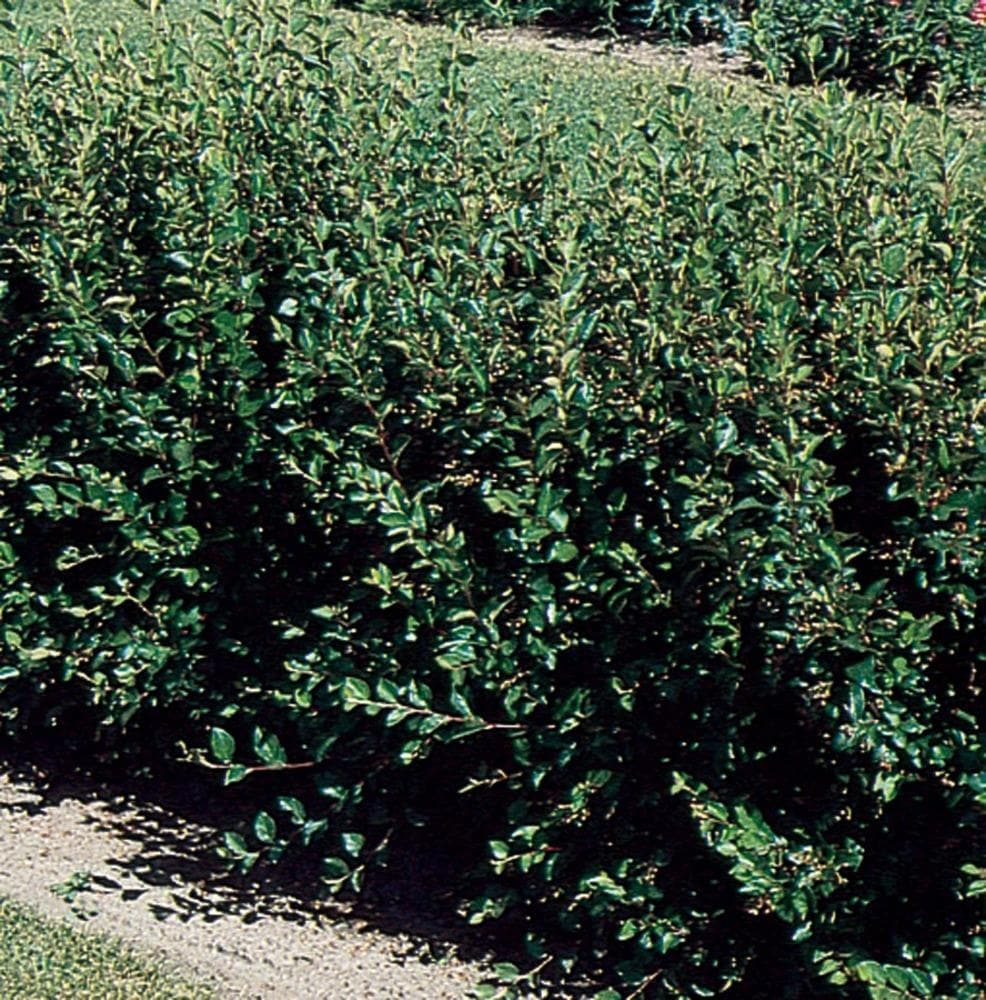Peking Cotoneaster: The Hardy Shrub That's Perfect For Any Landscape
Peking Cotoneaster: The Hardy Shrub That's Perfect for Any Landscape
Peking cotoneaster is a hardy shrub that is perfect for any landscape. It is easy to care for, tolerant of a wide range of conditions, and provides year-round interest with its beautiful foliage, flowers, and fruit.
In this blog post, we will discuss the following:
- The characteristics of Peking cotoneaster
- How to plant and care for Peking cotoneaster
- How to use Peking cotoneaster in your landscape
- The benefits of planting Peking cotoneaster
Characteristics of Peking Cotoneaster
Peking cotoneaster is a deciduous shrub that can grow up to 6-10 feet tall and wide. It has upright, arching branches that form a dense, rounded crown. The leaves are oval-shaped and have a glossy, dark green color. In the fall, the leaves turn a brilliant scarlet or orange color.
Peking cotoneaster produces small, white flowers in the spring. The flowers are followed by small, black fruits that persist into winter. The fruits are not edible for humans, but they are a favorite food of birds.
Planting and Caring for Peking Cotoneaster
Peking cotoneaster is a hardy shrub that can tolerate a wide range of conditions. It prefers full sun, but can also tolerate partial shade. It is also tolerant of a wide range of soil types, as long as the soil is well-drained.
Peking cotoneaster is easy to plant. Simply dig a hole that is twice the width of the root ball and plant the shrub at the same depth as it was growing in the container. Backfill the hole with soil and water the shrub well.
Peking cotoneaster is a low-maintenance shrub. Once it is established, it requires little watering or fertilizer. Prune the shrub in the spring to remove any dead, damaged, or diseased branches. You can also prune the shrub to shape it or to keep it in bounds.
How to Use Peking Cotoneaster in Your Landscape
Peking cotoneaster is a versatile shrub that can be used in a variety of ways in your landscape. It can be used as a hedge, screen, or border. It can also be used as an accent plant or in a shrub border.
If you are using Peking cotoneaster as a hedge, plant the shrubs 2-3 feet apart. If you are using it as a screen, plant the shrubs 4-6 feet apart. If you are using it as an accent plant, plant it in a prominent location in your yard.
Peking cotoneaster can also be used in containers. If you are growing it in a container, choose a pot that is at least one size larger than the root ball. Make sure the pot has drainage holes.
The Benefits of Planting Peking Cotoneaster
There are many benefits to planting Peking cotoneaster in your landscape. Here are a few of the most notable benefits:
- Hardy: Peking cotoneaster is a hardy shrub that can tolerate a wide range of conditions.
- Low-maintenance: Peking cotoneaster is a low-maintenance shrub that requires little watering or fertilizer.
- Attractive: Peking cotoneaster is an attractive shrub with beautiful foliage, flowers, and fruit.
- Versatility: Peking cotoneaster is a versatile shrub that can be used in a variety of ways in your landscape.
- Benefits wildlife: The fruits of Peking cotoneaster are a favorite food of birds.
Conclusion
Peking cotoneaster is a hardy, low-maintenance, and attractive shrub that is perfect for any landscape. It can be used as a hedge, screen, border, accent plant, or in a container. If you are looking for a shrub that will add beauty and year-round interest to your yard, Peking cotoneaster is a great choice.
If you're looking for a beautiful and low-maintenance shrub for your garden, the Peking cotoneaster is a great option. This hardy plant is known for its glossy, dark green leaves, pink flowers, and small black berries. It's also a great choice for attracting butterflies and songbirds.
If you're interested in learning more about the Peking cotoneaster, I recommend visiting Garden Wiki. This website has a wealth of information about the plant, including its care requirements, planting tips, and pest and disease control. You can also find photos and videos of the plant in its different stages of growth.
I hope this helps!
FAQ of peking cotoneaster
- What is Peking cotoneaster?
Peking cotoneaster is a deciduous shrub that is native to China. It is known for its white flowers in the spring and its red berries in the fall. Peking cotoneaster is a hardy plant that can tolerate a wide range of conditions, making it a popular choice for landscaping.
- How to plant Peking cotoneaster?
Peking cotoneaster can be planted in the spring or fall. Choose a location that receives full sun or partial shade. The soil should be well-drained and fertile. Dig a hole that is twice as wide and as deep as the root ball of the plant. Place the plant in the hole and backfill with soil. Water the plant well.
- What does Peking cotoneaster need to thrive?
Peking cotoneaster is a relatively low-maintenance plant. It needs full sun or partial shade and well-drained soil. It should be watered regularly, especially during hot, dry weather. Fertilize the plant in the spring with a balanced fertilizer.
- How to prune Peking cotoneaster?
Peking cotoneaster can be pruned in the spring or fall. Prune to remove dead, diseased, or damaged branches. You can also prune to shape the plant or control its size.
- Is Peking cotoneaster invasive?
Peking cotoneaster is not considered to be an invasive plant. However, it can spread by self-seeding. If you are concerned about the plant spreading, you can remove the berries before they ripen.
Image of peking cotoneaster
5 different images of "peking cotoneaster" from pinterest.com:
- Image 1: A large, bushy shrub with dark green leaves and clusters of white flowers.

- Image 2: A close-up of the leaves of a Peking cotoneaster, showing their glossy green surface and serrated edges.

- Image 3: A mature Peking cotoneaster shrub in fall, with its leaves turning shades of red, orange, and yellow.
- Image 4: A row of Peking cotoneaster shrubs planted as a hedge.
- Image 5: A single Peking cotoneaster shrub in a pot, on a patio.

Post a Comment for "Peking Cotoneaster: The Hardy Shrub That's Perfect For Any Landscape"